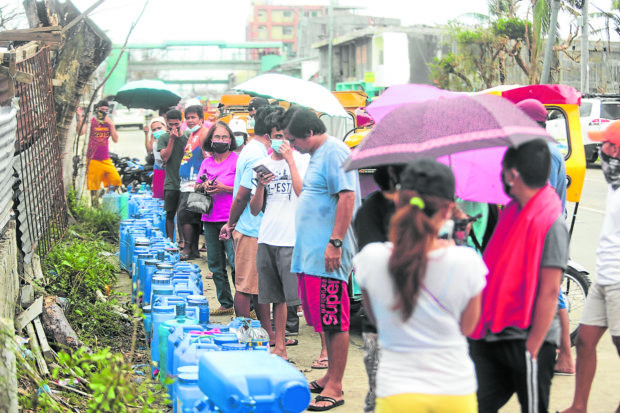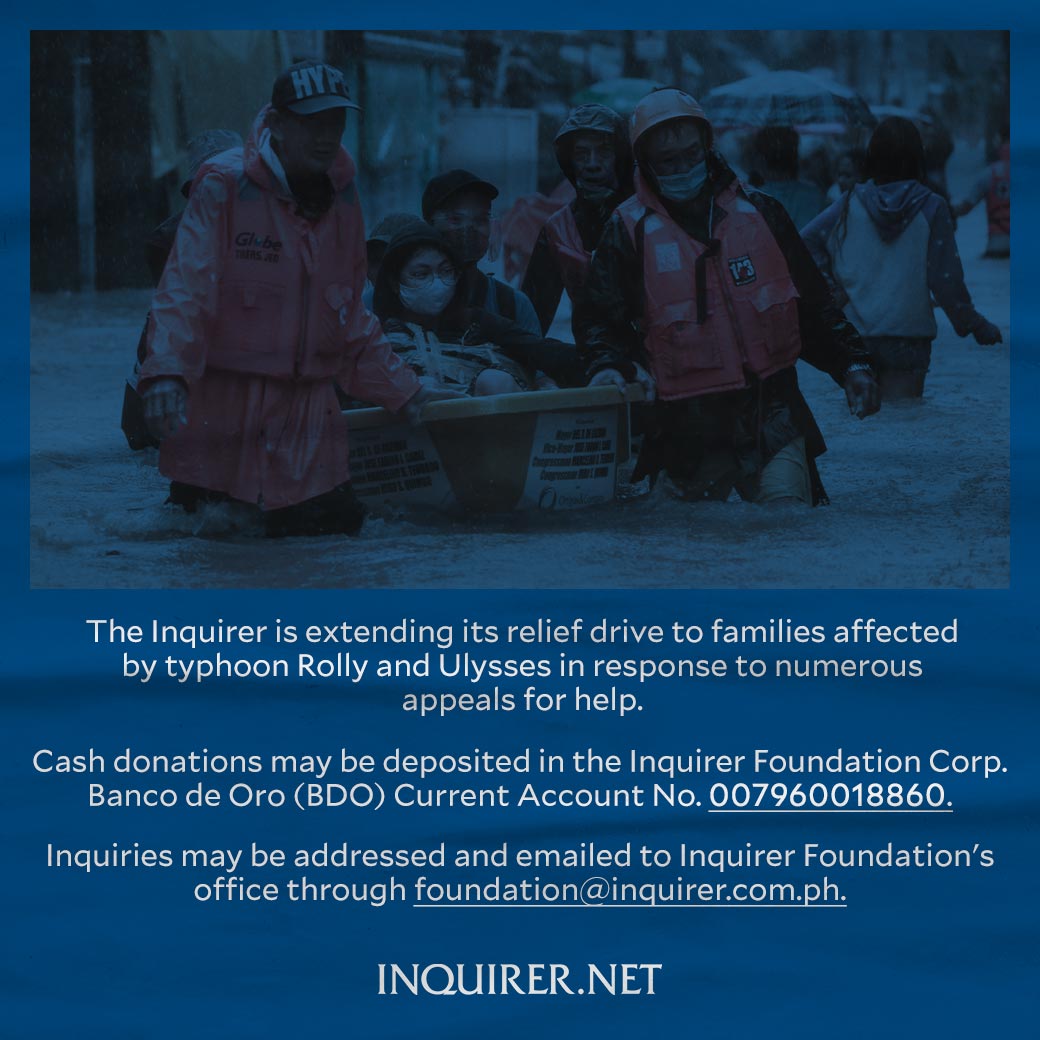Typhoon-hit Catanduanes endures water shortage

PRECIOUS DROP Water lines in Virac, Catanduanes, are heavily damaged by Typhoon “Rolly,” prompting residents to queue for their household supply in water rationing stations in the town. —MARK ALVIC ESPLANA
Water supply in the island province of Catanduanes may not return to normal soon as finding the damaged lines and rehabilitating the distribution system would take time, according to the Local Water Utilities Administration (LWUA).
In the meantime, the LWUA would deploy a mobile water treatment plant to the province, but it would need help in distributing water to households, said Jeci Lapus, the agency’s administrator.
Catanduanes’ water and power lines were extensively damaged during the onslaught of Typhoon “Rolly” (international name: Goni), which also destroyed thousands of houses.
According to Lapus, repairing water lines is not as simple as fixing toppled electricity posts. The main distribution lines are underground, buried 5 feet (1.52 meters) deep, and pressure tests would be needed to determine where the damage is located, he said.
The LWUA plans to rehabilitate the entire system instead of having to find every damaged area, he said. “But this would not be completed in a short time,” he added.
Article continues after this advertisementFinding source
It would have to conduct diggings for the distribution lines and find a water source, Lapus said.
Article continues after this advertisementThe LWUA is waiting for approval of the project from the Office of Civil Defense, as the agency does not have quick response funds for this situation.
Lapus said the usual supply source for Catanduanes was surface water, or those from rivers which dry up during summer. The province also sources water from deep wells, but these need a recharging source, such as dams, he said.
The LWUA chief said water should be treated to prevent people from getting diseases and that his office would need help in distributing treated water to communities.
The agency’s mobile water treatment plant, which has a capacity of 90,000 liters per day, is expected to arrive in Catanduanes on Wednesday.
Virac, the capital town, has a water tanker, but its capacity is only 4,000 liters, which would serve only 40 households since each home would need 100 liters daily, Lapus said.
Calamity state in 3 regions
The LWUA would also send personnel to check on the damage to the supply system and to look for alternative water sources.
Presidential spokesperson Harry Roque said it was “most likely” that President Duterte would declare a state of calamity in the Bicol, Calabarzon and Mimaropa regions after these were hit by successive typhoons.
The National Disaster Risk Reduction and Management Council earlier recommended the declaration of a state of calamity in these areas to pave the way for the release of quick response or standby funds for relief and recovery programs. INQ
